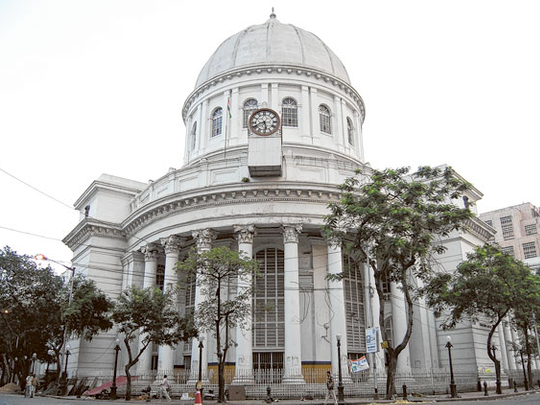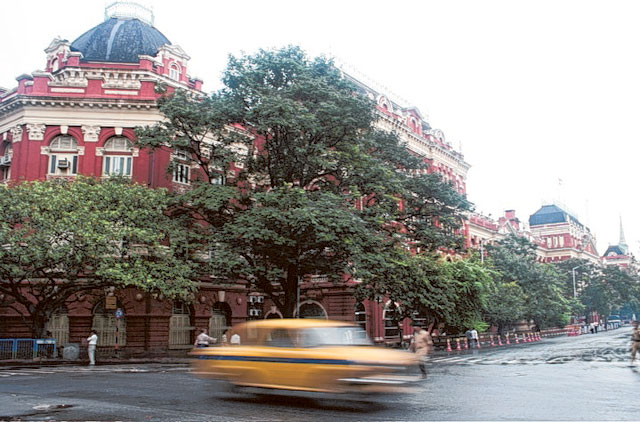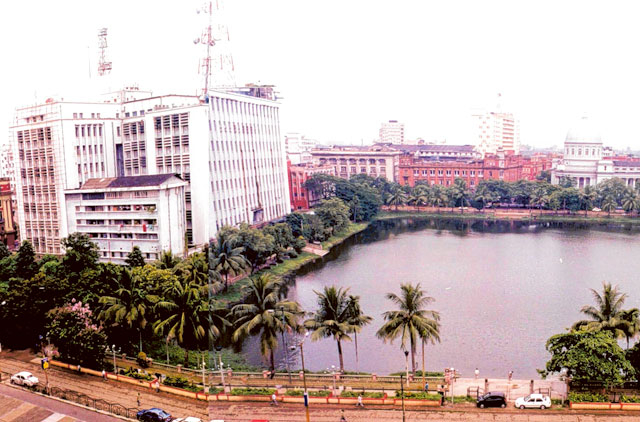
One day in the late 17th century, an agent of the East India Company named Job Charnock, sailing along the river Hooghly, decided to camp on its marshy banks. His company, which first came to India to trade rather than to rule, went on to buy three villages on the riverside — Gobindapur, Kalikata and Sutanuti, thus paving the way for establishment of the erstwhile capital of the British India: Calcutta. Even today, it draws dreamers, doers and intellectuals from all over the world.
As the trade flourished and the British realised the importance of being in India, these villages were transformed into a port, supplying spices, indigo, muslin and jute for the factories in England, and India became the crown jewel of the British Empire.
Later, as the East India Company transformed itself from the trader to the ruler, it wanted to strengthen its presence. And there was no better way to do so than with grand buildings to awe the local people and showcase their racial superiority.
The British ruled for hundreds of years, until the middle of last century. Now, 63 years on, India has evolved from a colony to a mature, sovereign, democratic nation, but Calcutta, known today as Kolkata, is still replete with the architecture of the Raj and proudly wears its history.
Colonial Calcutta
Dalhousie Square, named in memory of Lord Dalhousie, who was the governor-general of India from 1847 to 1856, is spread over two square kilometres in the heart of the city and can be best described as the Britishers’ Calcutta, as it is where the British lived, thrived, married and even died.
There is no better way of discovering this history than by taking a walk amid the creations of the Raj. We started our walk from the grand façade of the Great Eastern Hotel — now in the process of being renovated by its new owners — under the guidance of Manjit Singh of Calcutta Walks, whose mission is to showcase the colonial heritage and the architectural beauty of Calcutta.
When the Great Eastern Hotel, one of the oldest hotels in the country, started operations back in 1840, it was referred to as the “Jewel of the East”. By 1883, it had become one of the first hotels in the country to be illuminated by electric lights. A glimpse of what the hotel might have been like then can be found in Rudyard Kipling’s short story “City of Dreadful Night” from the book “The City of Dreadful Night and Other Places”.
What is particularly fascinating is the brickwork that had been exposed after the plaster had been peeled off on the western face of the building. laying bare the important changes the façade had undergone over the years, stretching back perhaps into the early 1860s. The bare columns, though, told a different story: their alignment and shape had remained unchanged for nearly 150 years.
The very thought that the city was trying to restore and preserve its architectural heritage elated me. However, the joy was short-lived, as I soon arrived at the disfigured hulk of the Currency Building, completed in 1868, which is a matter of great shame for the city, considered as the cultural capital of India. Nonetheless, the building is under restoration after being identified by the World Monument Fund as an endangered World Heritage Site, and soon the Reserve Bank of India plans to open a currency museum there.
Diagonally opposite the Currency Building, at the corner of Old Court House Street, is the imposing edifice, known previously as the Dead Letter Office, the campanile of which has been a defining landmark of the area since 1876, when the building was completed. Even today, all letters that don’t find a place in our homes have their final resting place here.
Few steps away, the St Andrew’s Church is the only Scottish church in India. Built in Grecian style in 1815, this was the foreground of the original Fort William, which was demolished after Nawab Siraj-ud-Daula defeated the British in 1756 and a large tank built in its place. The tank then served as Calcutta’s water supply.
Grand architecture
As we crossed the road, Manjit warned us not to take pictures, as we now stood in front of the imposing Writer’s building, a high-security zone. Writer’s building is now the seat of power of the West Bengal government. This colossal Gothic structure was built in 1780 by the East India Company to house junior writers (read clerks), and during the tenure of lieutenant-governor Ashley Eden, it got its present form.
Opposite this all-red edifice is the Lal Dighi — meaning red pond in Bengali. We clicked pictures of the Lal Dighi, concealing our equipment from the glare of the policemen on duty. It looked like an oasis amid human chaos, which best describes Dalhousie Square today. At a point in history, natives — as the British used to refer Indians — were forbidden to use this pond.
As we continue walking, the history unfolded itself in every step we took. What caught our eye was a white building with an impressive dome. Recently restored, this Victorian-style building still serves as the General Post Office and also houses a postal museum and philatelic library. It was built in 1868 at a cost of Rs650,000 (Dh45,000), a huge amount at that time.
Manjit told us that this is where the original Fort William stood, and a brass strip on the eastern staircase of the GPO is reminiscent of that. (Don’t forget to take a picture of the clock adorning the dome, which was brought from London at a cost of Rs7,000.)
Few metres down the road, we reached the governor’s house or Raj Bhavan, as it is known today. Built by Lord Wellesley at the beginning of the 19th century, it was occupied by 24 governors-general of India until 1912, when it ceased to be the residence of the Viceroy. This massive building, with 8,000 square metres of floor space and a 11-hectare campus, was modelled on the England’s Kedleston Hall, the house of the great-great-grandfather of Lord Curzon, who later lived here as the viceroy and the governor-general exactly 100 years after Wellesley.
As we neared the end of the walk, a sense of anger flooded me — of having ignored such grand architectural history despite spending much of my life in this city. This is followed by a feeling a relief of finally seeing them.
Our last stop was the St John’s church, which also houses the mausoleum of Job Charnock, who died in 1692, two years after founding the British settlement in Calcutta. Originally built as a cathedral, it was among the first public buildings to be constructed by the East India Company after Calcutta became the capital of British India.
Even as Manjit was filling us in on titbits of history, my mind was glued to one thought: Shall we be able to preserve this history for our future generations? I don’t have an answer today, but it is up to us to at least make an attempt.
Archisman Dinda is a journalist based in Kolkata.




